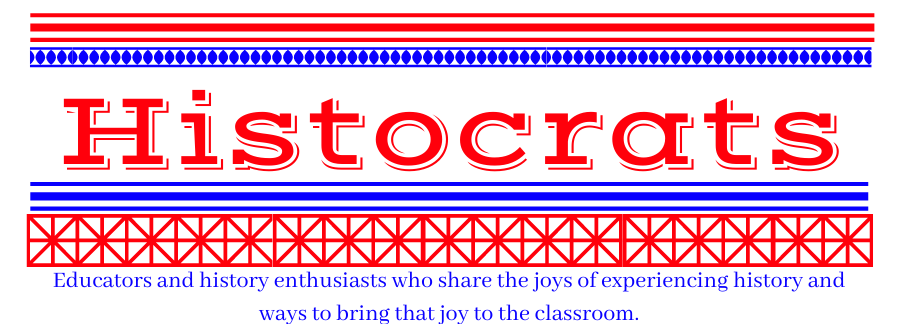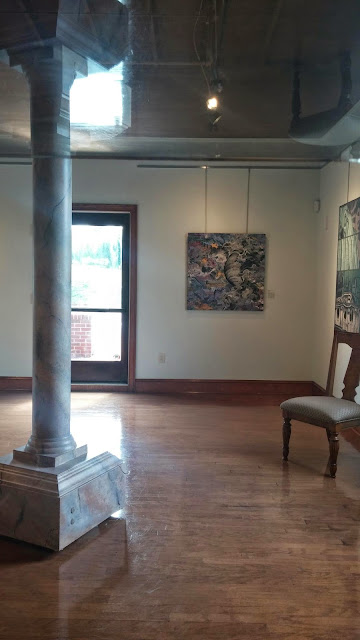Do you like to travel? Do you like History? Do you like combining both? One of the places to visit with an eye towards history is Wyoming— a state where you can walk in the steps of pioneers or dinosaurs, visit Ghost Towns or battlefields, see museums or a rodeo, or just soak in the beauty of nature. Wyoming is home to all these things, as well as Yellowstone and Grand Teton National Parks, and Devils Tower National Monument. It is also the home to the Eastern Shoshone and Northern Arapaho tribes. It is a great destination for anyone who loves to travel with a mind to history and nature.
Some great sites to see:
 Sheridan--The
railroad came to Sheridan because of expanding markets for the area’s coal,
wheat, and cattle. With the railroad
came businessmen, politicians and families.
They would often stay at the Sheridan Inn which opened in June 1893 and
was built by the Burlington & Missouri Railroad and the Sheridan Land
Company. The
design was based on a hunting lodge and the inn is reported to have a resident
ghost, Kate Arnold. Miss Kate’s ashes
are located inside the walls of the inn.
Sheridan--The
railroad came to Sheridan because of expanding markets for the area’s coal,
wheat, and cattle. With the railroad
came businessmen, politicians and families.
They would often stay at the Sheridan Inn which opened in June 1893 and
was built by the Burlington & Missouri Railroad and the Sheridan Land
Company. The
design was based on a hunting lodge and the inn is reported to have a resident
ghost, Kate Arnold. Miss Kate’s ashes
are located inside the walls of the inn. Fort Phil Kearney--was built at the forks of Big and Little Piney Creeks by Colonel Henry Carrington. Its Mission: Protect travelers on the trail, Prevent intertribal warfare between Native Americans in the area, draw attention of Indian forces opposed to American westward expansion away from the transcontinental railroad construction corridor to the south. The Fort was built to protect the Bozeman Trail (offshoot of the Oregon Trail). The most famous incident to occur at the fort was the Wagon Box Fight. In August 1867, 32 woodcutters and guards were attacked by a large force of warriors under Chief Red Cloud.
Cody, Wyoming--A wonderful small city built by Buffalo Bill Cody. In Cody, we stayed at the Irma Hotel, named for Cody's daughter. While at the hotel be sure to check out the historic bar. The town is also known as the Rodeo capital of the world. After checking out the Irma's bar head to the Rodeo. Cody is a wonderful Western town and we spent a great deal of time walking the Main Street.
 Buffalo
Bill Historic Center--Located in Cody, this is considered to be the Smithsonian of the West. It is a Collection of museums (Plains Indian
Peoples, Buffalo Bill and the American West, Western Art, Firearms) looking at the west from a variety of
different perspectives. The museum was
founded by members of Buffalo Bill Cody's family and honors the American
West. The museum will give you a new perspective and admiration on Buffalo Bill. His life was full of contradiction--the man
who was known for killing buffaloes was also known for their conservation. With Cody, history and myth are intertwined
and the two were blended together into what would become his Wild West shows. Within the center, the McCracken Research Library is wealth of information and the best
reference for his life.
Buffalo
Bill Historic Center--Located in Cody, this is considered to be the Smithsonian of the West. It is a Collection of museums (Plains Indian
Peoples, Buffalo Bill and the American West, Western Art, Firearms) looking at the west from a variety of
different perspectives. The museum was
founded by members of Buffalo Bill Cody's family and honors the American
West. The museum will give you a new perspective and admiration on Buffalo Bill. His life was full of contradiction--the man
who was known for killing buffaloes was also known for their conservation. With Cody, history and myth are intertwined
and the two were blended together into what would become his Wild West shows. Within the center, the McCracken Research Library is wealth of information and the best
reference for his life. Menor’s
Ferry Historic District-- Bill Menor squatted on 149 acres overlooking the Grand Tetons. He was alone in the western part of the valley next to the Snake River for
more than 10 years. Today, the historic
district has a White-Washed Cabin which was the original homestead of Menor. The jewel of the district is the Chapel of the Transfiguration, a church since 1925.
The alter in the church has a window with a breathtaking view of the
Grand Tetons.
Menor’s
Ferry Historic District-- Bill Menor squatted on 149 acres overlooking the Grand Tetons. He was alone in the western part of the valley next to the Snake River for
more than 10 years. Today, the historic
district has a White-Washed Cabin which was the original homestead of Menor. The jewel of the district is the Chapel of the Transfiguration, a church since 1925.
The alter in the church has a window with a breathtaking view of the
Grand Tetons. These are just some of the highlights to see if you head to Wyoming to experience history and nature. What would you include in your historical tour of Wyoming?









